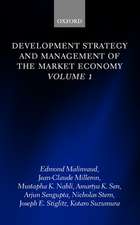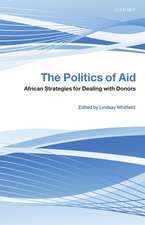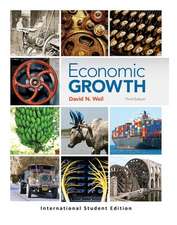The Political Economy of Discontinuous Development: Regional Disparities and Inter-regional Conflict
Autor Milica Z. Bookmanen Limba Engleză Hardback – 29 noi 1991 – vârsta până la 17 ani
Preț: 439.34 lei
Preț vechi: 708.65 lei
-38% Nou
Puncte Express: 659
Preț estimativ în valută:
84.06€ • 87.78$ • 69.42£
84.06€ • 87.78$ • 69.42£
Carte tipărită la comandă
Livrare economică 15-29 aprilie
Preluare comenzi: 021 569.72.76
Specificații
ISBN-13: 9780275937775
ISBN-10: 0275937771
Pagini: 288
Dimensiuni: 156 x 235 x 24 mm
Greutate: 0.6 kg
Ediția:New.
Editura: Bloomsbury Publishing
Colecția Praeger
Locul publicării:New York, United States
ISBN-10: 0275937771
Pagini: 288
Dimensiuni: 156 x 235 x 24 mm
Greutate: 0.6 kg
Ediția:New.
Editura: Bloomsbury Publishing
Colecția Praeger
Locul publicării:New York, United States
Notă biografică
MILICA ZARKOVIC BOOKMAN is Associate Professor of Economics at St. Joseph's University in Philadelphia. She previously published Issues in Indian Agricultural Development (1987) and her numerous articles on India and Yugoslavia have appeared in Atlantic Economic Journal, Soviet Studies, and Peasant Studies, among others.
Cuprins
FoundationsIntroductionDiscontinuous Development and Inter-regional ConflictDiscontinuous Development and Inter-regional ConflictPeaceful Inter-regional Conflict: Slovenia, Quebec, Lombardy, and the Baltic States of the USSRViolent Inter-regional Conflict: Punjab, Bougainville, Katanga, and BiafraThe Economic Basis of Inter-regional Conflict and Secession: International ComparisonsEmpirical Evidence from India and YugoslaviaThe Economics of High Income Regions: Growth and Structure of ProductionDiscontinuous Development: Spatial and Temporal DimensionsRegional Dependency I: Agricultural High-income RegionsRegional Dependency II: Industrial High-income RegionsCenter-State Relations, Federal Policies, and DecentralizationInter-regional Flows under Discontinuous DevelopmentIs Secession a Solution?Selected BibliographyIndex











